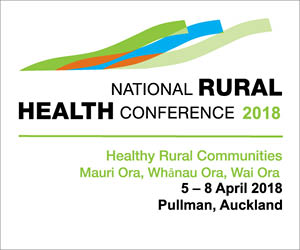Targeting inappropriate antibiotic prescribing and improving infection control are amongst the 18 action areas in the country’s just launched Antimicrobial Resistance Action Plan.
The action plan, published online at the weekend, is New Zealand’s contribution to fighting the global risk that increased antimicrobial resistance will see people needlessly die from infections and diseases that are currently treatable.
Better monitoring and reporting on antibiotic and other antimicrobials being used in hospitals and the community will be part of a national surveillance programme of antimicrobial resistance and antimicrobial use in humans, animals and agriculture to be established.
This will include analysing the dispensing of antibiotics to identify “prescriber types” with the data used to “develop and target interventions” to promote “appropriate” prescribing. It will also examine the differences between the prescribing of antimicrobials in the community and hospitals.
Educating consumers about appropriate antibiotic use and developing resources to support better prescribing, including the possibility of prescriber targets, are priority actions. Along with improving infection prevention and control in health facilities, schools and community-based services including promoting a “one-team” approach to infection prevention and control in health facilities.
Health Minister Dr Jonathan Coleman and Food Safety Minister David Bennett launched the finalised plan that was first aired at the 70th World Health Assembly in Geneva earlier this year.
Bennett said as a major food producer, New Zealand must manage antimicrobial resistance in animals and plants effectively.
You can view and download the plan here
The 18 action areas are built around the plan’s five objectives:
1. Awareness and understanding: Improve awareness and understanding of antimicrobial resistance through effective communication, education and training.
2. Surveillance and research: Strengthen the knowledge and evidence base about antimicrobial resistance through surveillance and research.
3. Infection prevention and control: Improve infection prevention and control measures across human health and animal care settings to prevent infection and the transmission of micro-organisms.
4. Antimicrobial stewardship: Optimise the use of antimicrobial medicines in human health, animal health and agriculture, including by maintaining and enhancing the regulation of animal and agriculture antimicrobials.
5. Governance, collaboration and investment: Establish and support clear governance, collaboration and investment arrangements for a sustainable approach to countering antimicrobial resistance.






















